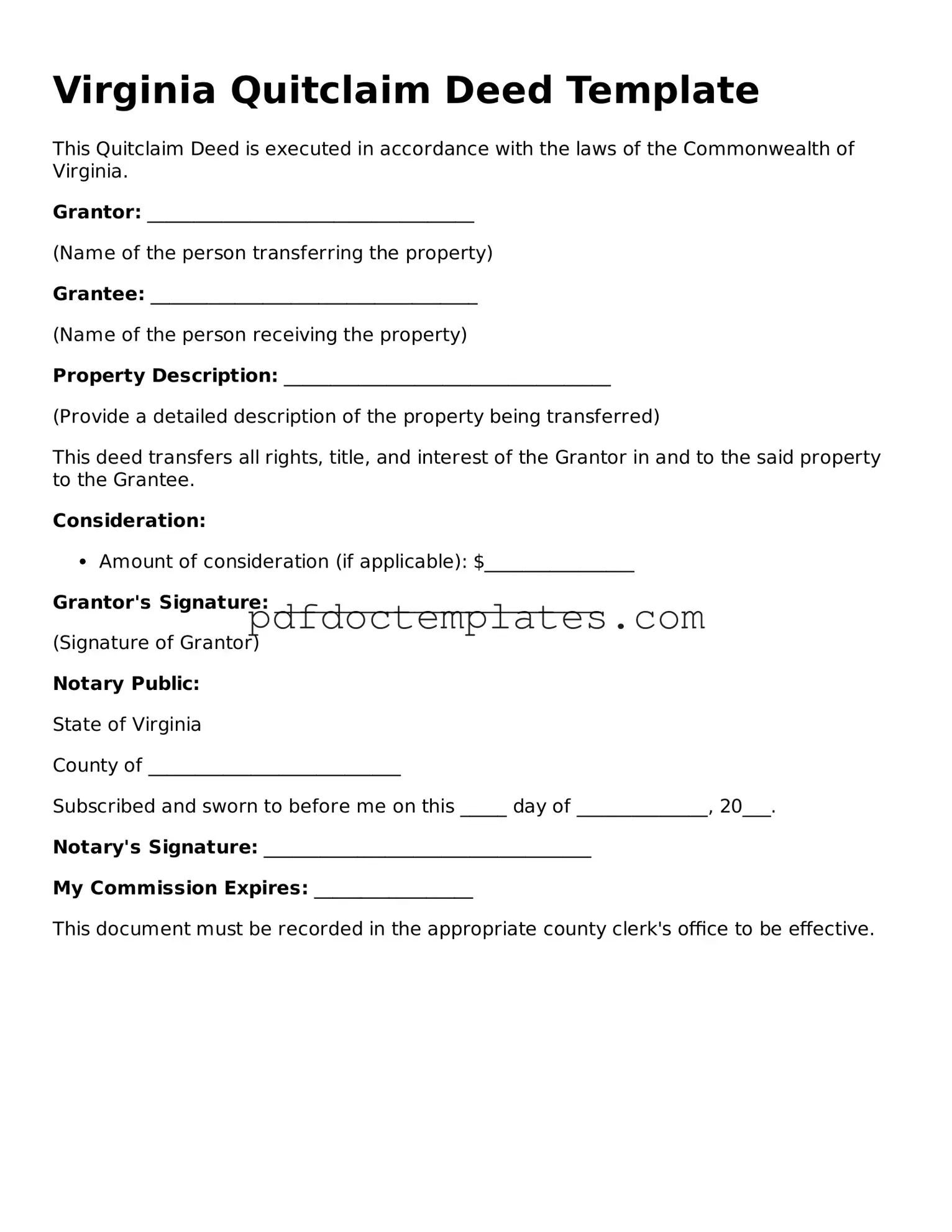Virginia Quitclaim Deed Template
This Quitclaim Deed is executed in accordance with the laws of the Commonwealth of Virginia.
Grantor: ___________________________________
(Name of the person transferring the property)
Grantee: ___________________________________
(Name of the person receiving the property)
Property Description: ___________________________________
(Provide a detailed description of the property being transferred)
This deed transfers all rights, title, and interest of the Grantor in and to the said property to the Grantee.
Consideration:
- Amount of consideration (if applicable): $________________
Grantor's Signature: ___________________________________
(Signature of Grantor)
Notary Public:
State of Virginia
County of ___________________________
Subscribed and sworn to before me on this _____ day of ______________, 20___.
Notary's Signature: ___________________________________
My Commission Expires: _________________
This document must be recorded in the appropriate county clerk's office to be effective.
